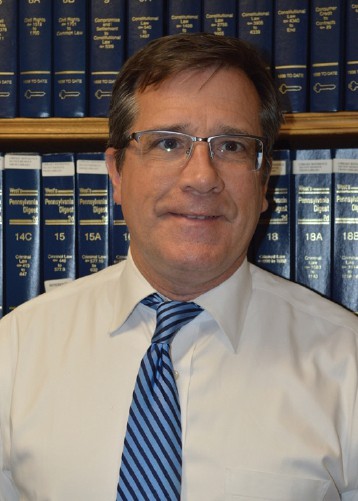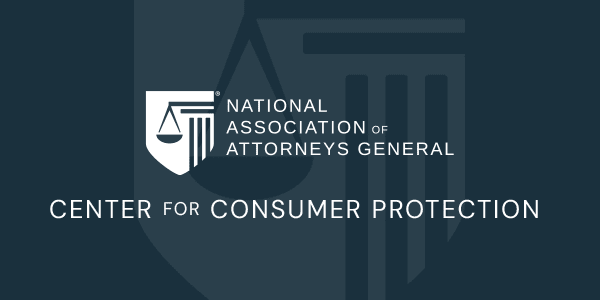-
 Senior Deputy Attorney General, Bureau of Consumer ProtectionPennsylvania Attorney General’s Office
Senior Deputy Attorney General, Bureau of Consumer ProtectionPennsylvania Attorney General’s Office
This article will provide practical guidance on how to prepare and present consumer testimony at trial in a manner that is both effective and ethical. Oftentimes, live consumer testimony is the most powerful piece of evidence to be presented in a case alleging a violation of state Uniform Deceptive Acts and Practices (UDAP) law. These consumers often come from all walks of life and from the local area in which the trial is being held. Their stories presented in a logical and factually based way not only help the litigant meet the elements of proof, but also serve to put a “human face” on the proceeding. UDAP cases often turn on the question of deception which is left to the judge to determine in many cases because the matters are proceeding by way of a bench trial in light of the injunctive relief being sought. The task then is to demonstrate for the judge how ordinary consumers perceive the situation and whether the defendant’s conduct in fact had a capacity to mislead or deceive, which is the standard employed in many jurisdictions.1
Any discussion about the role of an assistant/deputy attorney general (DAG) in handling consumer testimony must begin with a reflection on what sort of ethical duties are imposed on such an attorney. While the rules of professional conduct by their text alone do not expressly impose a higher ethical duty on government attorneys, the reality is that most judges, as well as the public, rightfully expect those attorneys to “follow the high road.” As the U.S. Supreme Court pronounced over 70 years ago: “The United States Attorney is the representative not of an ordinary party to a controversy, but of a sovereignty whose obligation to govern impartially is as compelling as its obligation to govern at all, and whose interest . . . is not that it shall win a case, but that justice shall be done.”2
The same could be said of a DAG when bringing an action under UDAP laws requesting a variety of relief including injunction as well as restitution for affected consumers.3 The admonition recited in Berger v. United States becomes even more important when preparing consumer testimony for use at trial because much of the work done in this regard occurs “off the record” so to speak and is usually the attorney and the witness doing that preparation, with no judicial oversight and involvement of opposing counsel. Some writers have referred to this as the “dark” area or “dirty little secret.”4 Ultimately then, it is the attorney’s own sense of ethics or integrity that guides the process by which a witness is prepared. There is a scarcity of cases that examine what is proper in witness preparation as those issues rarely surface at the pretrial or trial stage. Most of the reported cases deal with the most egregious professional conduct violations such as attempted subordination of perjury or inducing a witness to testify falsely. Most DAGs would be well served to stay far away from such a potential violation.
The issue becomes more difficult when one is attempting to discern a difference between proper preparation and improper coaching.5 Oftentimes the distinction is described as the difference between helping to prepare the witness in how to testify while refraining from telling the witness what to say – i.e., putting words in the witness’s mouth. In helping to navigate this distinction, there are some model rules that provide guidance including:
- Rule 8.4(c) Lawyer cannot engage in conduct involving:
-Dishonesty
-Fraud
-Deceit
-Misrepresentation
- Rule 8.4(d): Lawyer cannot engage in conduct prejudicial to the administration of justice.
- Rule 1.2(a): Lawyer cannot counsel/assist client in conduct lawyer knows is criminal or fraudulent.
- Rule 3.4(b): Lawyer cannot counsel or assist a witness to testify falsely.
- Rule 3.3(a)(3): Lawyer cannot offer evidence that the lawyer knows to be false.
- Under Rule 3.3: If a witness called by the lawyer has offered material evidence and the lawyer comes to know its falsity, the lawyer shall take reasonable measures, including, if necessary, disclosure to the tribunal.
With these guiding principles in mind, a DAG is well advised to meet with consumers, often as early as possible, to discuss the facts of their individual complaint. If it is likely that the matter will not reach trial for some time and, if the witness’ health or age is an issue, counsel may also want to consider recording their testimony in the form of a deposition for use at trial. Oftentimes there is information beyond what has been submitted in a written complaint, such as emails or texts along with the consumer’s own notes. Since the question of deception will turn in part on what impression or understanding the witness had based on her dealing with the defendant, any contemporaneous notes that the consumer made would be helpful. As the trial date approaches, it is preferable to meet with the consumers in person either at their home or in the office.
Keep in mind, though, that those discussions are likely to be discoverable and the consumer may be properly cross examined as to the substance of those discussions. For this reason, the first and most important rule in preparing witnesses is to emphasize the consumer’s obligation to testify truthfully, regardless of whether that helps or hurts the DAG’s case. To quote the TV character Joe Friday from the 1950s television series Dragnet, seek to have a consumer focus on “just the facts.” Oftentimes, a consumer has become emotionally invested in his or her individual complaint and are motivated to help the government “win” its case. The consumer witnesses must be disabused of this notion, even if it takes reminding them of their proper role over and over again.
In addition to making clear that the consumer’s primary obligation is to tell the truth, an attorney should also make it clear that neither he nor his office is representing the consumer. The attorney should also make it clear that the opposing counsel may also call to discuss the matter with the consumer. Absent a subpoena, the consumer is not required to speak to that attorney.
Many of the general rules governing witness preparation apply with equal force when preparing consumers including the following:
- Reviewing documents with the consumer that may be used during testimony.
- Going over probable lines of cross examination the witness may face.
- Reviewing basic logistics with the consumer such as what courtroom, where to park, when to appear (with or without documents), any reimbursement available for travel, and witness fees as provided by governing law.
- Reviewing the manner in which his or her testimony will be presented meaning that the DAG will ask the questions first and then the cross examination; reminding the consumer that s/he will be sworn in under oath; and explaining the layout of the courtroom, the various players, such as the court reporter, and who sits where.
- Asking consumers to make sure they understand each question before they answer and allow any objections to be resolved before proceeding to provide testimony.
- Advising the consumer to speak slowly and in an audible manner, sufficient for the court reporter to record his or her testimony and for the judge as fact finder to hear the testimony.
- Reviewing with the consumer that s/he is only obligated to give the best present recollection and there should be no guessing or speculating.
- Reminding consumers to dress appropriately.
- Reviewing any prior statements.
- Letting the consumer know that s/he may not be allowed in the courtroom while others are testifying especially if a sequestration order has been entered.
- Encouraging the consumer witness to use everyday language.
Some practitioners actually rehearse testimony or provide written questions, going over the line of questioning until it develops into an acceptable format. The danger here is that the testimony may appear rehearsed or contrived, especially if the lawyer is suggesting specific words. Keep in mind also that the written list of questions may also be discoverable. In addition, it is important to note that many consumer witnesses are under stress and nervous about testifying so “over preparation” may merely heighten that anxiety. The witnesses should not feel like their testimony is a “test” where they have to give the right answer.
For many consumers, this may be the only time in their lives that they have entered a courtroom, so part of the attorney’s job is to allay their fears. Much of what they have seen on television is unrealistic. Express the idea that this is a serious matter but, if they tell the truth, they will do just fine. With consumer cases, there is an added dimension in that, oftentimes, consumers are embarrassed about what happened to them and reluctant to speak in great detail about their experiences because they do not want other family members to know. This may be particularly true with senior witnesses and the DAG’s job in this instance is to explain that their testimony is important to the overall case which is being brought on behalf of the public at large.
The question often arises as to how much context the lawyers should give the witness when explaining the nature of the underlying claims and defenses. Many are familiar with the “lecture scene” from the novel and movie Anatomy of a Murder.6 The other terminology used is “horse-shedding,” a term originated by James Fennimore Cooper in the 1800s when there were horse sheds near the courthouse where lawyers would talk the case over with their witnesses.7 While a lawyer might be able to review with the witness the nature of the claims being brought, as well as the relief requested, the danger here is that the attorney may go “too deep into the weeds” as to the elements of proof that he is soliciting from that witness. Consequently the witnesses may feel tempted to shade their testimony in a manner they view favorable for the government side. For this reason, a brief review of the nature of the case, as well as the defenses, should suffice in preparing the testimony of the witness.
In consumer cases, the testimony may often be similar among the witnesses and the temptation would be to prepare the witnesses in a group. This should be avoided and each witness should be prepared separately in order to avoid the risk of collusion or consumers feeling they must alter their testimony to match others.
Another issue in consumer protection cases is the marshalling together of the necessary consumers and what quantum of testimony is necessary for the government to seek its full range of restitutionary relief. This is true because oftentimes the UDAP claim turns on the question of “pattern or practice.” Some jurisdictions may require live consumer testimony in order to award restitution to each consumer. In this instance, it is important to line up as many consumers as possible under subpoena to make sure the lawyer can make out the prima facia case.
In other jurisdictions, affidavits may well be acceptable under a catchall exception to hearsay.8 Also, there are some federal precedents that will allow a judge to order relief in a broad based manner even though not all impacted consumers testified.9
Recently, the Pennsylvania Office of Attorney General along with the state’s acting consumer advocate brought five separate actions in the Pennsylvania Public Utility Commission against electric generation suppliers for their alleged misconduct in marketing and selling variable rate plans to Pennsylvania consumers who experienced high electric bills during the polar vortex of early 2014. This matter was in the nature of an administrative proceeding that allowed consumer testimony to be submitted in writing with the opportunity for cross examination by telephone if requested by the Respondents. Four of those cases have been resolved by settlements that are in various stages of necessary approval within the administrative agency. The fifth one has resulted in a tentative ruling by the administrative law judges. These proceedings have resulted in substantial restitution to thousands of impacted consumers. Effective and ongoing communication with those consumers was critical in achieving those favorable results.
At other times, the Pennsylvania Office of Attorney General has confronted cases involving a significant number of consumers and the challenge again is to individually prepare each consumer so that the testimony is presented both in an ethical and effective manner. When done correctly, that consumer testimony will prove to be the most compelling part of your case.
Endnotes
1 For example, in Pennsylvania, an act or practice will be deemed deceptive or unfair if it has the capacity or tendency to mislead; it need only be shown that the acts or practice in question are capable of being interpreted in a misleading way. Commonwealth v. Peoples Benefit Services, Inc., 923 A.2d 1230, 1236 (Pa. Commw. Ct. 2007).
2 Berger v. United States, 295 U.S. 78, 88 (1935).
3 See Freeport – McMoran Oil & Gas Co. v. F.E.R.C., 962 F.2d 45, 47 (D.C. Cir. 1992) (attorneys representing government agencies may be held to higher standards than attorneys for private litigants); Williams v. Sullivan, 779 F.Supp. 471 (W.D. Mo. 1991) (court is of the view that there is a special duty imposed on government lawyers to seek justice and develop a full and fair record); Fudali v. Napolitano, 2012 WL 2108651 (N.D. Ill.) (case can be made that government has a greater obligation to participate fairly in discovery than non-governmental litigants).
4 See, Bennett L. Gershman, Witness Coaching by Prosecutors, 23 Cardozo L. Rev. 899 n.2, 3 (Feb. 2002).
5 The Supreme Court in Geders v. United States, 425 U.S. 80, 90 n.3 (1976), addressed the problem of improper influence on testimony or coaching of a witness, noting “[a]n attorney must respect the important ethical distinction between discussing testimony and seeking improperly to influence it.” See also State v. McCormick, 259 S.E.2d 880, 882-83 (1979) (it is not improper for an attorney to explain to the witness the applicable law in any given situation and go over questions and answers before trial so the witness will be more at ease because he knows what to expect).
6 Robert Traver, Anatomy of a Murder (1958).
7 Gershman, Cardozo L. Rev. at 829, n..5.
8 F.T.C. v. Amy Travel Service, Inc., 875 F.2d 564, 567 (7th Cir. 1989) (consumer affidavits were admissible by discretion of trial court when requirements of F.R.E 803(24) were met and Defendants had proper notice of affidavits).
9 See F.T.C. v. Kitco of Nevada, Inc., 612 F. Supp. 1282, 1294 (D. Minn 1985); F.T.C. v. Figgie Int’l, Inc., 994 F.2d 595 (9th Cir. 1993).




